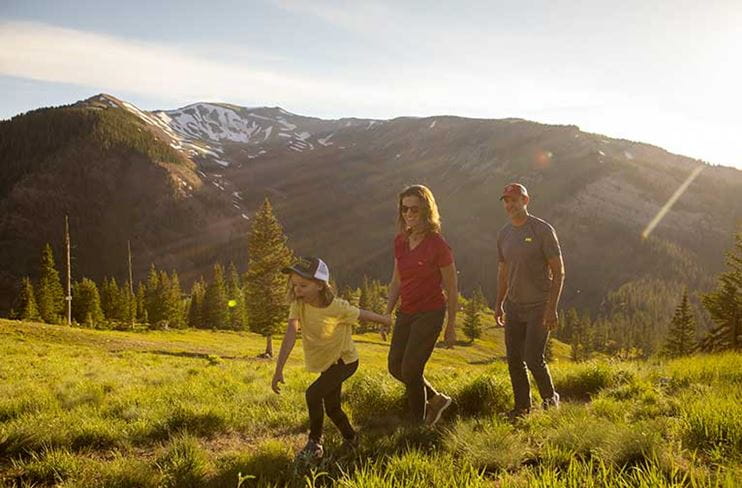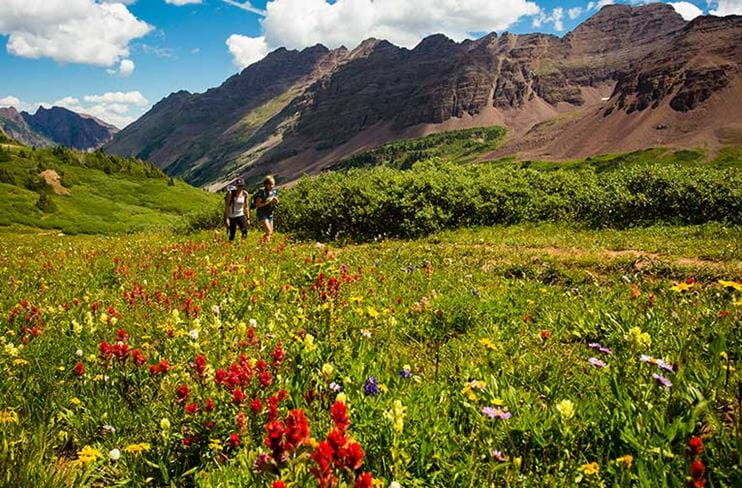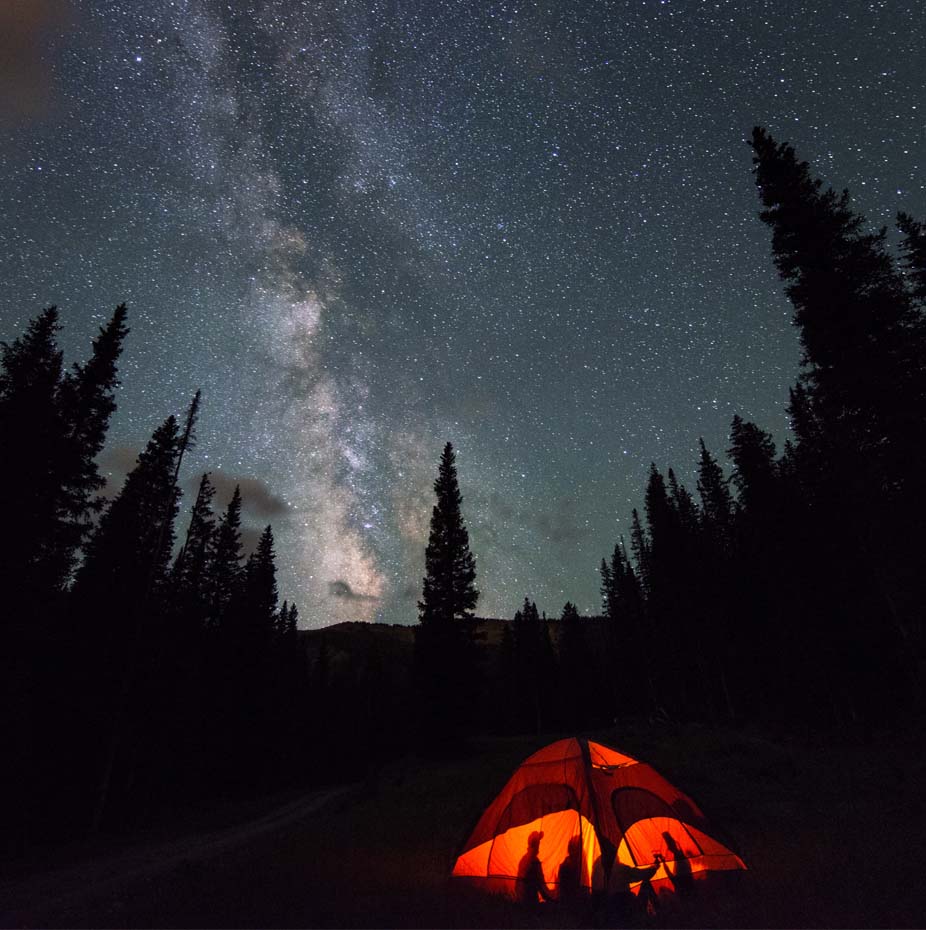
Where to Camp Near Aspen Snowmass

Always check to see if your chosen campsite requires a reservation.
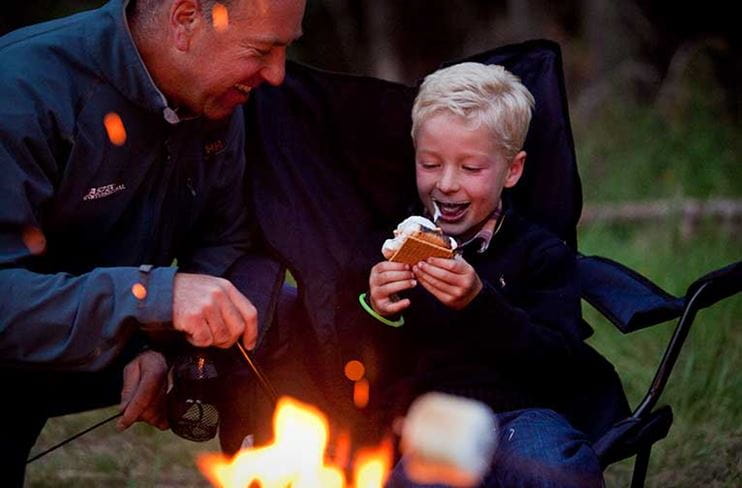
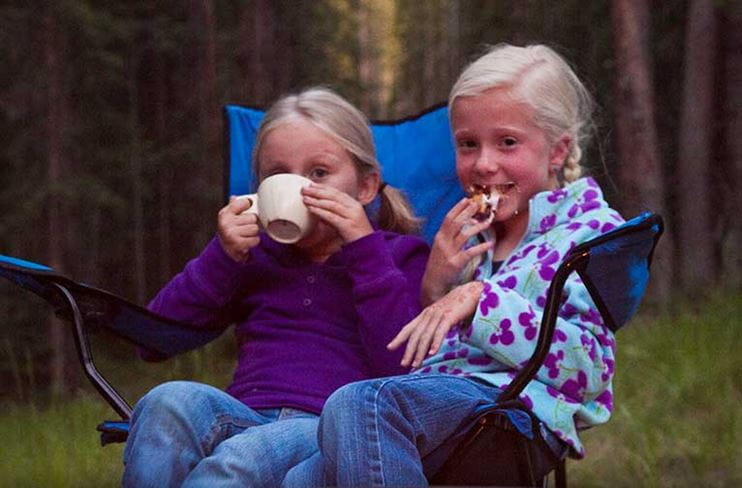
Keep in mind that camping trips involve a fair amount of planning and preparation—there’s no running to the corner store for coffee or propane for the camp stove. Stock up on trip necessities, including firewood and ice, ahead of time. It’s also important to educate yourself and know the rules before arrival—if there’s a fire ban due to high wildfire danger, for example, be extra sure you don’t forget the camp stove and have warm layers for cold Rocky Mountain nights. Be aware of campground etiquette, like securing food in bear-proof containers (provided at most established campgrounds) and turning down the volume during posted quiet hours (voices carry in the open air). Finally, make sure your transportation and fuel are adequate to get you to camp—some of the most secluded, primitive sites are well up rough 4WD drive roads—and forget about cell phone service or internet in most of these places.
Ready to get away from it all? Here’s where to set up camp around Aspen Snowmass.
Maroon Creek Valley
If your goal is to spend some time exploring the Maroon Bells and surrounding wilderness, there are three small campgrounds (Silver Bar, Silver Bell, and Silver Queen) up Maroon Creek Road nestled in aspen groves nearest to these most photographed peaks in North America. For obvious reasons, reservations fill up quickly. One campground—Silver Bell—offers 10 first-come, first-served sites, five of which are walk-in.Fryingpan Valley
This spectacular, red-rock valley winding up from Basalt toward the Hunter-Fryingpan Wilderness and Continental Divide is a camping mecca. With 175 campsites in established campgrounds and many more primitive drive-in camping options, the Fryingpan makes a great home base to hike, bike, fish, paddleboard, or just relax in nature.
If water recreation or hanging out on a mountain beach is your thing, 86 reservable campsites suitable for tents, trailers, and RVs can be found around the 1,000-acre Ruedi Reservoir. Four are clustered near the dam end of the reservoir and boat launch: Ruedi Marina, Little Mattie, Little Maud, and Mollie B—all offer easy access to the lake. On the inlet end of the lake, Dearhamer Campground offers 13 sites—and a day-use area that can attract plenty of fishermen, but few powerboats at that narrow end of the reservoir.
Continuing up the valley, 29 miles from Basalt and seemingly in the middle of nowhere is Chapman Campground, with 84 reservable sites for tents, trailers, and RVs. Many are shaded by tall pine trees, and the campground has its own horseshoe pit and volleyball court, plus a nature trail that starts at the site and several hiking trails in the vicinity. But the campground’s main attraction, especially for families, is Chapman Reservoir. Fronted by a day-use area with picnic tables and a shady shoreline ideal for lounging in camp chairs, this picture-perfect manmade lake is small enough for kids to paddle around on paddleboards or other small craft, undisturbed by power boats and with several spots to explore or toss in a fishing line.
For dispersed camping, there are multiple options along Forest Service roads—some more obvious than others. One well-known dispersed camping area is Twin Meadows, a flat, grassy meadow with several small lakes and nearby hiking. About 28 miles from Basalt, it’s a right turn onto a dirt road at the sign for Norrie Colony. There’s also a small, primitive campground, Elk Wallow, with seven first-come, first-served sites about four miles up Forest Service Road 501.
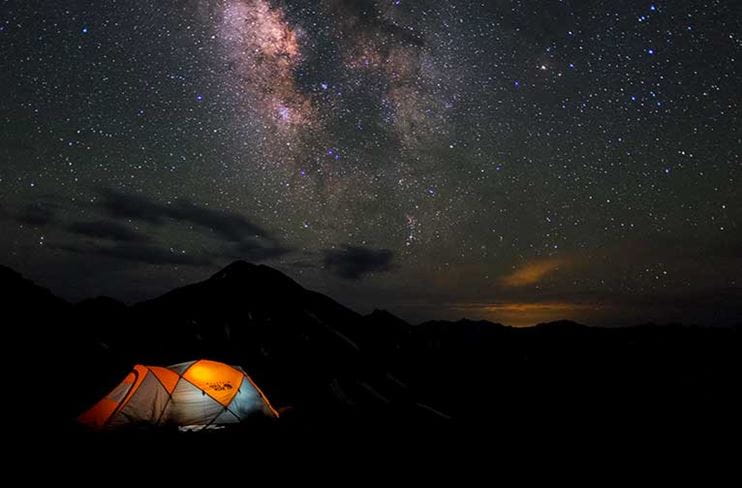
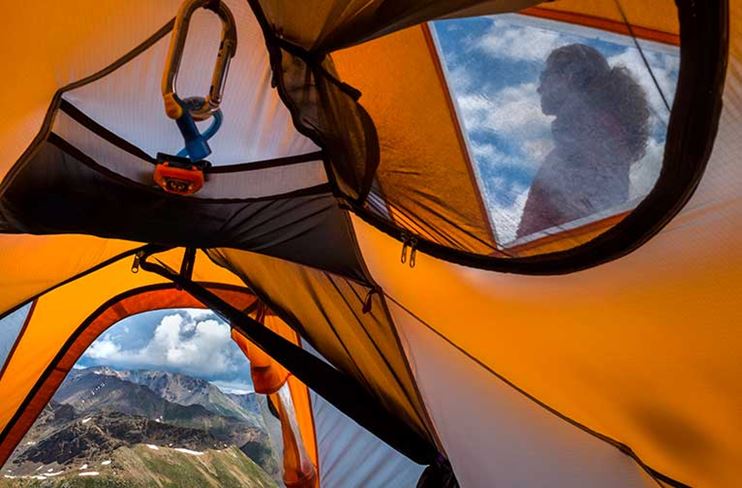
East of Aspen and Independence Pass
The closest camping area to downtown Aspen is four miles east of town at Difficult Campground. With 47 sites (plus a large group site) in an aspen and evergreen forest, as well as easy access to hiking (the Difficult Creek trailhead is in the campground), fishing, and all that Aspen has to offer, this is a very popular spot—even on weekdays campsites are snapped up quickly once the six-month-in-advance reservation window opens.
Continuing east on Highway 82 toward Independence Pass are several first-come, first-served campgrounds as well as dispersed camping. The Weller Campground, close to the popular Grottos recreation area and Weller Lake hiking trails, has 11 campsites around a short loop directly off the highway. Similarly, Lost Man Campground offers 10 campsites in a lodgepole pine forest across from the Lost Man Trailhead. Between the two, 11 miles from Aspen, Lincoln Creek Road offers many camping options—and is a portal to hiking, biking, four-wheel driving, wildflower viewing, and fishing at elevations starting at 9,600 feet. Lincoln Gulch Campground, just two miles down the dirt road, offers seven sites. Primitive camping in multiple well-established sites can be found nearly all the way down Lincoln Creek Road, which gets increasingly rough and requires high clearance. Seven miles in, the five-site Portal Campground sits on Grizzly Reservoir, a good fishing spot. Past the reservoir, a 4WD road leads to even more dispersed camping nearing the tree line.
Castle Creek Valley
There are no established campgrounds up the Castle Creek Valley, but after passing Ashcroft Ghost Town and the Pine Creek Restaurant, the pavement ends at 14 miles. Take the right fork up the 4WD Pearl Pass Road and a little over a mile in, you’ll start to see seven dispersed campsites. From camp, you can continue four-wheeling all the way up to 12,723-foot Pearl Pass and beyond to Crested Butte, hike two 14,000-foot peaks (or fourteeners): Castle and Conundrum, or just revel in the splendor of the spectacular alpine landscape.
...And Beyond
South of Carbondale, the Crystal River Valley offers a number of camping options, from the KOA (with cabin rentals and amenities including a swimming pool and wifi) to campgrounds near Redstone and Marble, plus dispersed camping in the Thompson Creek recreation area, managed by the Bureau of Land Management. Head up into the Flat Tops, north of Glenwood, where there are numerous established campgrounds, lots of dispersed camping, and hundreds of miles of trails for hiking, horse riding, and OHV riding. Spring and fall are great times to drive a couple hours west to the Fruita area, for camping and mountain biking in the desert.
